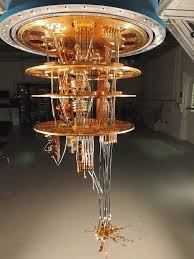
“Simulating the behavior of 100 billion neurons of human brain is not feasible by classical computer but quantum machine learning promises to fulfill that requirement.” “The beauty of quantum machine learning is that we do not need to depend on an algorithm like gradient descent or convex objective function.
Enrico Fermi, TEDx CERN, 1963
Introduction
Imagine if you had a computer that could simulate particles’ relativistic effects or count the number of stars in the universe. That type of computer is called a quantum computer and is fundamentally different from an IBM P.C or your Macintosh (called a classical computer). It operates on quantum bits that can simultaneously become LOW and HIGH voltages due to Hund’s rule and Heisenberg’s uncertainty principle that particles show infinite states at a pico-metre level.

How do quantum computers work?
Since a quantum computer must eventually interface with users, data, and networks—tasks that conventional computing excels at—a quantum computer can leverage a conventional computer for these tasks whenever it is most efficient to do so. Furthermore, qubit systems require carefully orchestrated control in order to function in a useful way; this control can be managed using conventional computers.
To assist in conceptualizing the necessary hardware components for an analog or gate-based quantum computer, the hardware can be modeled in four abstract layers: the “quantum data plane,” where the qubits reside; the “control and measurement plane,” responsible for carrying out operations and measurements on the qubits as required; the “control processor plane,” which determines the sequence of operations and measurements that the algorithm requires, potentially using measurement outcomes to inform subsequent quantum operations; and the “host processor,” a classical computer that handles access to networks, large storage arrays, and user interfaces. This host processor runs a conventional operating system/user interface, which facilitates user interactions, and has a high bandwidth connection to the control processor.
Materials used in quantum computing Using a lanthanide as a source of photoelectric reactions is the most efficient way of allowing more quantum circuits to establish in the element, the electrons in the circuit absorb 1 photon and release 2 photons at the same rate, allowing for data to double out of the circuit. This means that 1 qubit releases 2 lines of binary code. Silicon and lutetium are the best as they have 2 digit, lanthanidical atomic numbers (14 and 71) which creates a minimum of 128 circuits. Tellurium can also be used but it has too many unstable radioisotopes.
